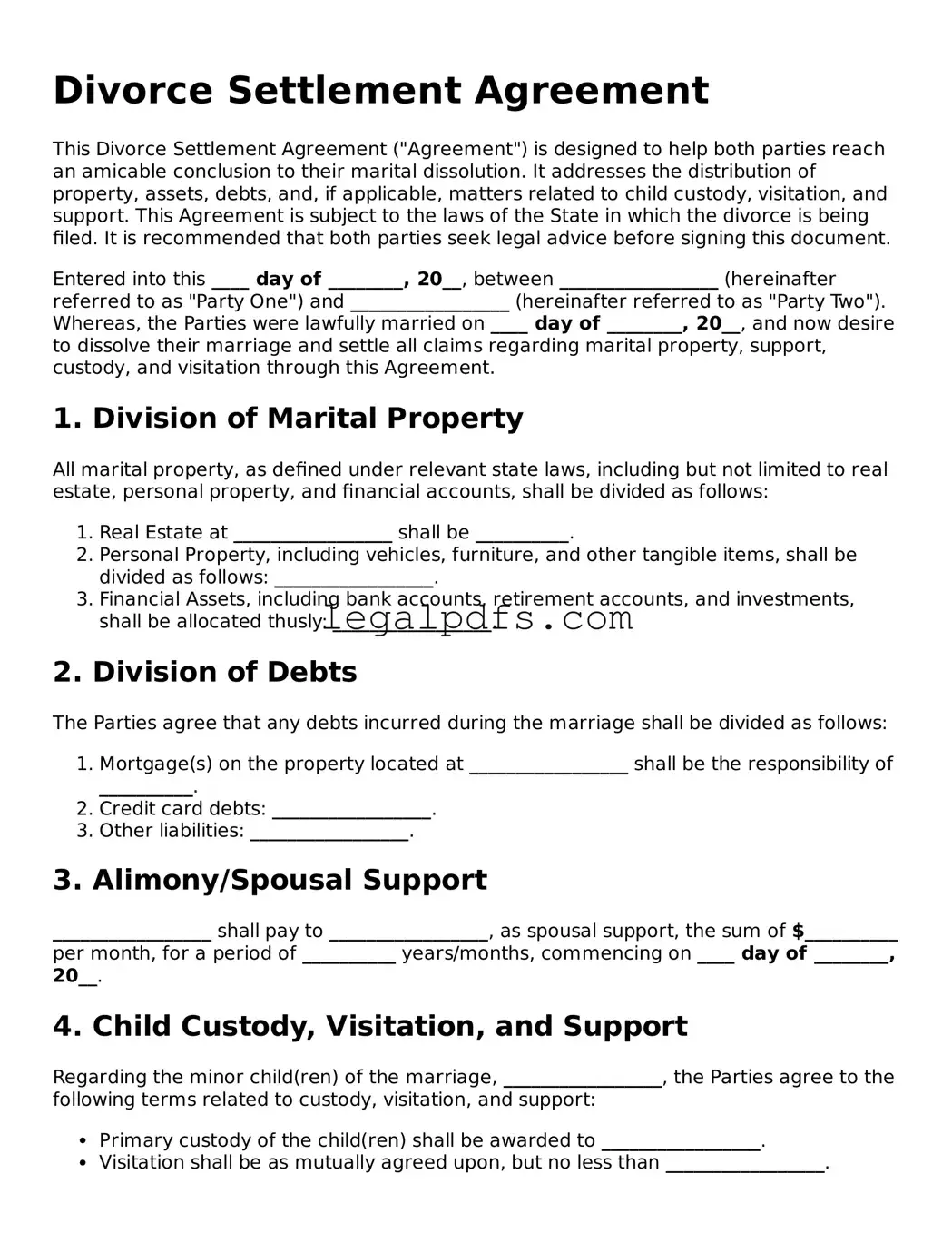Divorce Settlement Agreement
This Divorce Settlement Agreement ("Agreement") is designed to help both parties reach an amicable conclusion to their marital dissolution. It addresses the distribution of property, assets, debts, and, if applicable, matters related to child custody, visitation, and support. This Agreement is subject to the laws of the State in which the divorce is being filed. It is recommended that both parties seek legal advice before signing this document.
Entered into this ____ day of ________, 20__, between _________________ (hereinafter referred to as "Party One") and _________________ (hereinafter referred to as "Party Two"). Whereas, the Parties were lawfully married on ____ day of ________, 20__, and now desire to dissolve their marriage and settle all claims regarding marital property, support, custody, and visitation through this Agreement.
1. Division of Marital Property
All marital property, as defined under relevant state laws, including but not limited to real estate, personal property, and financial accounts, shall be divided as follows:
- Real Estate at _________________ shall be __________.
- Personal Property, including vehicles, furniture, and other tangible items, shall be divided as follows: _________________.
- Financial Assets, including bank accounts, retirement accounts, and investments, shall be allocated thusly: _________________.
2. Division of Debts
The Parties agree that any debts incurred during the marriage shall be divided as follows:
- Mortgage(s) on the property located at _________________ shall be the responsibility of __________.
- Credit card debts: _________________.
- Other liabilities: _________________.
3. Alimony/Spousal Support
_________________ shall pay to _________________, as spousal support, the sum of $__________ per month, for a period of __________ years/months, commencing on ____ day of ________, 20__.
4. Child Custody, Visitation, and Support
Regarding the minor child(ren) of the marriage, _________________, the Parties agree to the following terms related to custody, visitation, and support:
- Primary custody of the child(ren) shall be awarded to _________________.
- Visitation shall be as mutually agreed upon, but no less than _________________.
- Child support shall be paid by _________________ to _________________, in the sum of $__________ per month, until the child(ren) reach the age of 18 or complete high school, whichever is later.
5. Legal and Filing Fees
Each Party shall be responsible for their own legal fees incurred in connection with the divorce proceedings. Filing fees and costs associated with the filing of this Agreement in court shall be shared equally by both Parties.
6. Entire Agreement
This document contains the entire agreement between the Parties related to the matters outlined herein and supersedes any prior understandings or agreements. Any amendments to this Agreement must be in writing and signed by both Parties.
7. Governing Law
This Agreement shall be governed by the laws of the State of _________________, without regard to its conflict of law principles.
IN WITNESS WHEREOF, the Parties have executed this Agreement as of the date first above written.
Party One Signature: ____________________________________ Date: _________________
Party Two Signature: ____________________________________ Date: _________________
